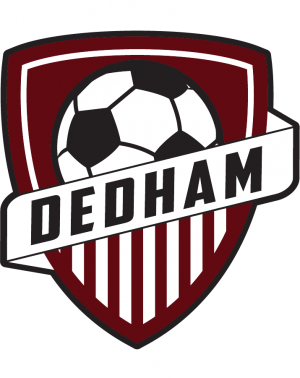Below is taken directly from US Soccer.
Environmental conditions can significantly impact player health and safety. Extreme temperatures, severe weather and the integrity of the playing field and its equipment all impact players’ ability to practice and compete safely. U.S. Soccer’s Recognize to Recover program gives players, parents, coaches and referees information and guidelines to make sure the desire to play does not cloud the decision-making process when it comes to evaluating environmental conditions to ensure the safety of those on the field.
Extreme heat can impact players' health and safe play. Proper hydration and knowing when you need to drink are critical, to help prevent many injuries and illnesses, from muscle cramps to heat stroke. Players should drink water before, during and after a game or practice, which means coaches should make sure there is adequate water available. U.S. Soccer’s Recognize to Recover program gives players, parents, coaches and referees information and guidelines to make sure the desire to play does not cloud the decision-making process when it comes to evaluating environmental conditions to ensure the safety of those on the field.
The effects of cold weather can impact health and safety during practices and games. The definition of “cold stress” varies across the United States, depending on how accustomed people are to cold weather. A player from Minnesota will have a much different threshold for cold than a player from Florida.
U.S. Soccer’s RECOGNIZE TO RECOVER program prepared this guide for coaches, referees and players for training or playing in colder climates. Additionally, it serves as a guide for match play and participant safety during extreme temperature conditions. The information provided is not a substitute for medical or professional care, and you should not use the information in place of a visit, consultation or the advice of your physician or other healthcare provider. For specific questions and concerns, please consult your health care provider or physician.
Lightning and Severe Weather is one of the top ten causes of sudden death in sport.1 As the majority of soccer is played outdoors, lightning and severe weather pose a threat to player health and safety. U.S. Soccer’s Recognize to Recover program, with the help of the Korey Stringer Institute, provides these guidelines for responding quickly and safely when lightning and severe weather threaten practice or a game. When it comes to making decisions to suspend or cancel play due to weather condition, coaches, officials, athletic trainers and administrators all share responsibility. These same individuals should be aware of close safe shelter locations and know how to evaluate when it is safe to resume play after severe weather leaves an area.
RECOVER
If someone is injured by a lightning strike, follow these emergency management steps:
- Call 911 and alert emergency medical responders (EMS).
- Establish that the area is safe before moving to help victim. If there is more than one victim, first assist those who appear in the most severe condition.
- Move individual(s) carefully to a safe location (victims of lightning strikes are safe to touch and do not carry an electric charge).
- Initiate CPR on victims who are unconscious, not breathing or have no pulse. Use an automated external defibrillator (AED) if one is available.
- Evaluate the individual(s) for additional injuries, such as broken bones or dislocations. Notify EMS of the potential injuries when they arrive on the scene.
Under no circumstances should a player injured in a lightning strike return to the game or practice. Injured players should only be allowed to return to play after a thorough examination and release by a qualified physician.
RECOGNIZE
- No place outside is safe when thunderstorms are in the area. All activity should be suspended, even if lightning or thunder has not yet been observed, and everyone should get indoors. Communicate this information completely and quickly to all participants.
- Consult the National Weather Service, the Storm Prediction Center or local media outlets for severe weather watches and warnings. Alerts can even be sent directly to your mobile device while you are on the field.
- Safe locations should be available with enough capacity to hold all who may need safe shelter. A primary location would be a fully enclosed building with wiring and plumbing. A fully enclosed vehicle with a solid metal roof, like a school bus, would be a safe secondary option. Open fields and open-sided shelters are not safe. If there are no adequate safe shelters close to the field, play must be stopped well in advance of the storm to allow everyone to travel to a safe place or their home.
- If it’s been half an hour since thunder, it’s safe to go outdoors. Outdoor activity may resume 30 minutes after the last sound of thunder or flash of lightning. The 30-minute clock restarts every time lightning flashes or thunder sounds.
Warning signs of a lightning strike:
- Feeling the hair stand on end
- Skin tingling
- Hearing crackling noises
If these occur, assume the lightning safe position:
- Crouch on the ground as low as you can
- Put all your weight on the balls of your feet
- Keep your feet together
- Lower head and cover your ears
- Do not lie flat on the ground
Field conditions vary from location to location, but safety practices are the same. There may be hazards on the field that need attention before safe play can begin.
RECOVER
- If hazards remain, play should be suspended or moved to a different location.
- Know your goal: There are 500,000 soccer goals across the United States in many shapes and sizes, each with specific safe anchoring guidelines. Anchor your goal correctly.
RECOGNIZE
- Trash and debris, including rocks, should be removed from the field.
- Make players aware of inconsistent surface conditions, such as uneven edges or bumps.
- Soccer goals should be properly anchored with weights or posts to prevent tipping forward.
